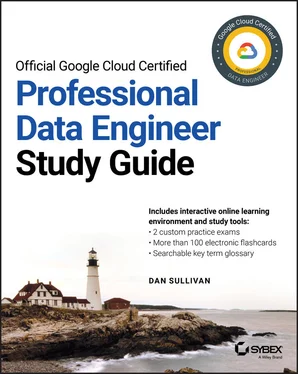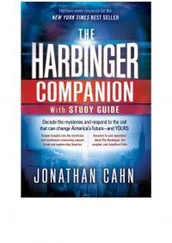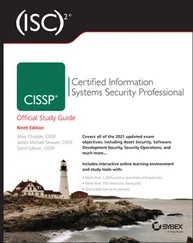The three broad ingestion modes with which data engineers typically work are as follows:
Application data
Streaming data
Batch data
Application data is generated by applications, including mobile apps, and pushed to backend services. This data includes user-generated data, like a name and shipping address collected as part of a sales transaction. It also includes data generated by the application, such as log data. Event data, like clickstream data, is also a type of application-generated data. The volume of this kind of data depends on the number of users of the application, the types of data the application generates, and the duration of time the application is in use. This size of application data that is sent in a single operation can vary widely. A clickstream event may have less than 1KB of data, whereas an image upload could be multiple megabytes. Examples of application data include the following:
Transactions from an online retail application
Clickstream data from users reading articles on a news site
Log data from a server running computer-aided design software
User registration data from an online service
Application data can be ingested by services running in Compute Engine, Kubernetes Engine, or App Engine, for example. Application data can also be written to Stackdriver Logging or one of the managed databases, such as Cloud SQL or Cloud Datastore.
Streaming data is a set of data that is typically sent in small messages that are transmitted continuously from the data source. Streaming data may be sensor data, which is data generated at regular intervals, and event data, which is data generated in response to a particular event. Examples of streaming data include the following:
Virtual machine monitoring data, such as CPU utilization rates and memory consumption data
An IoT device that sends temperature, humidity, and pressure data every minute
A customer adding an item to an online shopping cart, which then generates an event with data about the customer and the item
Streaming data often includes a timestamp indicating the time that the data was generated. This is often called the event time . Some applications will also track the time that data arrives at the beginning of the ingestion pipeline. This is known as the process time . Time-series data may require some additional processing early in the ingestion process. If a stream of data needs to be in time order for processing, then late arriving data will need to be inserted in the correct position in the stream. This can require buffering of data for a short period of time in case the data arrives out of order. Of course, there is a maximum amount of time to wait before processing data. These and other issues related to processing streaming data are discussed in Chapter 4, “Designing a Data Processing Solution.”
Streaming data is well suited for Cloud Pub/Sub ingestion, which can buffer data while applications process the data. During spikes in data ingestion in which application instances cannot keep up with the rate data is arriving, the data can be preserved in a Cloud Pub/Sub topic and processed later after application instances have a chance to catch up. Cloud Pub/Sub has global endpoints and uses GCP’s global frontend load balancer to support ingestion. The messaging service scales automatically to meet the demands of the current workload.
Batch data is ingested in bulk, typically in files. Examples of batch data ingestion include uploading files of data exported from one application to be processed by another. Examples of batch data include the following:
Transaction data that is collected from applications may be stored in a relational database and later exported for use by a machine learning pipeline
Archiving data in long-term storage to comply with data retention regulations
Migrating an application from on premises to the cloud by uploading files of exported data
Google Cloud Storage is typically used for batch uploads. It may also be used in conjunction with Cloud Transfer Service and Transfer Appliance when uploading large volumes of data.
Once data enters the GCP platform through ingestion, it can be stored for longer-term access by other applications or services.
The focus of the storage stage of the data lifecycle is to make data available for transformation and analysis. Several factors influence the choice of storage system, including
How the data is accessed—by individual record (row) or by an aggregation of columns across many records (rows)
The way access controls need to be implemented, at the schema or database level or finer-grained level
How long the data will be stored
These three characteristics are the minimum that should be considered when choosing a storage system; there may be additional criteria for some use cases. (Structure is another factor and is discussed later in this chapter.)
Data is accessed in different ways. Online transaction processing systems often query for specific records using a set of filtering parameters. For example, an e-commerce application may need to look up a customer shipping address from a data store table that holds tens of thousands of addresses. Databases, like Cloud SQL and Cloud Datastore, provide that kind of query functionality.
In another example, a machine learning pipeline might begin by accessing files with thousands of rows of data that is used for training the model. Since machine learning models are often trained in batch mode, all of the training data is needed. Cloud Storage is a good option for storing data that is accessed in bulk.
If you need to access files using filesystem operations, then Cloud Filestore is a good option.
Security and access control in particular also influence how data is stored.
Relational databases, like Cloud SQL and Cloud Spanner, provide mechanisms to restrict access to tables and views. Some users can be granted permission to update data, whereas others can only view data, and still others are not allowed any direct access to data in the database. Fine-grained security can be implemented at the application level or by creating views that limit the data available to some users.
Some access controls are coarse grained. For example, Cloud Storage can limit access based on bucket permissions and access control lists on objects stored in a bucket. If a user has access to a file in the bucket, then they will have access to all the data in that file. Cloud Storage treats files as atomic objects; there is no concept of a row of data, for example, in Cloud Storage as there is in a relational database.
In some cases, you may be able to use other security features of a service along with access controls. BigQuery, for example, is an analytical database used for data warehousing, data analytics, and machine learning. Data is organized into datasets, which are groups of tables and views. At the current time, BigQuery supports dataset-level access controls but not access controls on tables or views directly. One way to work around these limitations is to create authorized views in one dataset that reference tables in another dataset. The dataset with the authorized views can have one set of access controls whereas the dataset with the source tables can have more restrictive access controls.
When choosing a data store, it is important to consider access control requirements and how well a storage system supports those requirements.
Читать дальше












